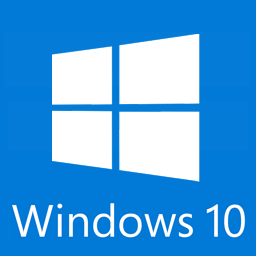Microsoft will force the transition to Windows 10 owners of new microprocessors
The company announced on its blog information according to which owners of computers with a microprocessor of modern architecture Intel Core Skylake and installed on them Windows 7 or Windows 8.1 prematurely lose the opportunity to receive the necessary updates. Users of such OSs using microprocessors of this architecture are invited to upgrade to Windows 10 within 18 months. After July 2017, users who have not switched to this OS will be deprived of the opportunity to receive updates in full.

Microsoft points out that Skylake-based devices running Windows 10 are much more efficient than those versions of Windows. Perhaps this was one of the reasons that the company prematurely ceases their support (the so-called best supported Windows experience) and, thus, will stimulate users to switch to a new OS. After July 2017, critical and other updates for Windows 7 and 8.1 on Skylake will be delivered only if the company can ensure their "full compatibility and reliability" with other architectures.
PCWorld has published a list of such PCs based on the Skylake architecture, which will be subject to the new rules.
Microsoft also indicates that the latest generation of microprocessors such as Intel Kaby Lake and Qualcomm 8996 (Snapdragon 820), as well as AMD Bristol Ridge will only support Windows 10 and it will not be possible to install previous OS on them.
It should be noted that extended support for Windows 7 will be implemented until January 2020, and Windows 8.1 until 2023. Thus, for owners of microprocessors of an outdated architecture, the situation will not change and they will continue to receive updates up to the indicated dates.
According to the company, Windows 10 provides users with 30 times better graphics and 3 times longer battery life on Skylake devices compared to Windows 7.

Microsoft points out that Skylake-based devices running Windows 10 are much more efficient than those versions of Windows. Perhaps this was one of the reasons that the company prematurely ceases their support (the so-called best supported Windows experience) and, thus, will stimulate users to switch to a new OS. After July 2017, critical and other updates for Windows 7 and 8.1 on Skylake will be delivered only if the company can ensure their "full compatibility and reliability" with other architectures.
Through July 17, 2017, Skylake devices on the supported list will also be supported with Windows 7 and 8.1. During the 18-month support period, these systems should be upgraded to Windows 10 to continue receiving support after the period ends. After July 2017, the most critical Windows 7 and Windows 8.1 security updates will be addressed for these configurations, and will be released if the update does not risk the reliability or compatibility of the Windows 7 / 8.1 platform on other devices.
PCWorld has published a list of such PCs based on the Skylake architecture, which will be subject to the new rules.
- Dell Latitude 12
- Dell Latitude 13 7000 Ultrabook
- Dell XPS 13
- HP EliteBook Folio
- HP EliteBook 1040 G3
- Lenovo ThinkPad T460s
- Lenovo ThinkPad X1 Carbon
- Lenovo ThinkPad P70
Microsoft also indicates that the latest generation of microprocessors such as Intel Kaby Lake and Qualcomm 8996 (Snapdragon 820), as well as AMD Bristol Ridge will only support Windows 10 and it will not be possible to install previous OS on them.
Going forward, as new silicon generations are introduced, they will require the latest Windows platform at that time for support. This enables us to focus on deep integration between Windows and the silicon, while maintaining maximum reliability and compatibility with previous generations of platform and silicon. For example, Windows 10 will be the only supported Windows platform on Intel's upcoming “Kaby Lake” silicon, Qualcomm's upcoming “8996” silicon, and AMD's upcoming “Bristol Ridge” silicon.
It should be noted that extended support for Windows 7 will be implemented until January 2020, and Windows 8.1 until 2023. Thus, for owners of microprocessors of an outdated architecture, the situation will not change and they will continue to receive updates up to the indicated dates.
According to the company, Windows 10 provides users with 30 times better graphics and 3 times longer battery life on Skylake devices compared to Windows 7.
Compared to Windows 7 PC's, Skylake when combined with Windows 10, enables up to 30x better graphics and 3x the battery life - with the unmatched security of Credential Guard utilizing silicon supported virtualization.
